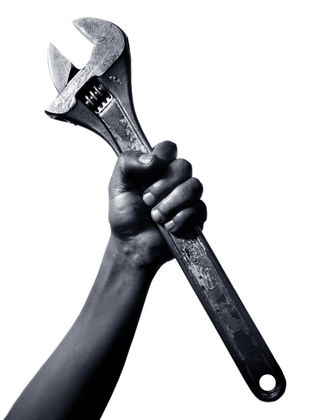Chronic Pain
Chronic Pain and Social Despair: Doctors Need to Listen
The doctor-patient relationship is the foundation of healing. Give us the time!
Posted April 20, 2020
Dr. Steve Overman is a rheumatologist and a good friend of mine. We practiced in the same medical community for over 30 years. He was aware of the whole person approach to treating chronic pain many years before I was. He looks at pain more from an inflammation perspective and has taught me much. I appreciate him taking the time to write this guest blog.
Despair affects every one of us
“It all started with back pain,” begins Atul Gawande in his review of the book, Deaths of Despair and the Future of Capitalism, co-authored by Anne Case, who previously studied the association between health and economic patterns but redirected her research towards chronic pain within society due to her own chronic back pain (2). What she found in 2014 surprised her – despite advances in labor-saving technologies and in pain treatments, the prevalence of chronic pain had gone up and the rates were especially high in middle-aged men and women without college educations.
Low back pain (LBP) is now the leading cause of disability worldwide, increasing by 54 percent between 1990 and 2015. People with physically demanding jobs, physical and mental comorbidities, smokers, and obese individuals are at greatest risk of reporting low back pain. Most people with new episodes of low back pain recover, but a significant minority develop persistent and disabling pain. Those more likely to develop persistent disabling low back pain start with initial high pain intensity, psychological distress, and accompanying pain at multiple body sites. Fibromyalgia and autoimmune conditions cause pain at multiple body sites, are associated with stress, and commonly go undiagnosed and untreated.
The continued rise in LBP associated disability impacts is not due to the lack of clinical care spending. From 1996 to 2016, total health care spending increased from an estimated $1.4 trillion to an estimated $3.1 trillion, with the two highest spending categories being low back and neck pain, and other musculoskeletal disorders, accounting for $264.3 billion.
In his clinical practice, Dr. Gawande has observed how adverse life events trigger depression, addiction, and pain. Similarly, Nicholas Kristoff described the social and health decline of his hometown Yamhill, Oregon, in Tightrope: Americans Reaching for Hope, where white, middle-class Americans were impacted by job loss, family conflict, and the opioid crisis (3). Some think the plight of these small towns doesn’t affect them, but Wilkinson and Pickett’s research has shown that this economic disparity affects ALL of society. In their book, The Inner Level; How equal societies reduce stress, restore sanity and improve everyone’s well-being, they analyze how the disparity within an unequal society causes worse health outcomes across all economic groups and suggest the emotional distress of living in an unequal society causes stress associated disease and mental illness.
Gawande concludes his review by sounding an alarm that “the blighted prospects of the less educated” is a festering, public health crisis, which is NOT unexpected, unlike the coronavirus. But similar to our lack of system readiness for COVID-19, Case and Deaton’s findings suggest that our complicated and costly healthcare system is not only unprepared to deal with the epidemic of stress in society, it contributes to the problem. Two ways are the deficiency of primary care and the limited time all providers have for listening to patients. Listening to patient stories is the first step in developing trust and offering hope to a distressed patient. Undervaluing this time means the important diagnostic data attained from their stories is lost and the emotional, social impacts of stress and pain in their lives are not ascertained.

Physical therapists listen
“It all started with back pain” for me too. Evaluating physical therapists providing first-contact care for patients with LBP, we found the patients with high disability measured by the Sickness Impact Profile (a patient-reported instrument that includes the physical, mental health, and social domains) did better with PTs than usual medical care. The extra time and listening PTs offered patients was a factor. Time to gather a comprehensive patient story was also important to optimizing conservative care in a musculoskeletal consultation program developed for a Medicare risk health plan and which reduced care costs over 50 percent. Physicians and patients alike initially thought this program to be an intrusion, but patients became very satisfied with their clinical improvement and avoided invasive procedures.
Healing rarely progresses in a straight line and the phases of illness recycle in unpredictable fashions—crisis to stabilization, grief to acceptance, and learning to live well—as described in You Don’t LOOK Sick: Learning to Live Well with Chronic Invisible Illness. (1) Despair and life stress commonly trigger these returns to hopelessness, pushing a person to turn to unproven therapies, dangerous opioid medications, illicit drugs, and potentially harmful invasive procedures with little evidence of their long-term effectiveness. Listening to a patient’s story, besides being essential for developing patient trust, gathers the most critical data for making a diagnosis and providing quality care. Without listening, diagnostic clues are missed and painful conditions go undiagnosed. One unfortunate young woman lost her life after spine surgery at my hospital when she and her parents were not heard.
Patients need to be in charge
These perspectives, 40 years of rheumatology practice and advocacy work have led me to what I believe is the only strategy that will improve the plight of those with chronic pain and force system change to help patients drive their own care. In their book, Unraveled: Prescriptions to Repair a Broken Health Care System, Dr. William Weeks, a health quality researcher, and Dr. James Weinstein, an orthopedic surgeon, medical center CEO, and father of a daughter who died of leukemia, state, “patients need to be involved—and indeed, drive—this industrial revolution in health care.”

Not being believed
The 2011 IOM Report “Relieving Pain in America: A Blueprint for Transforming Prevention, Care, Education, and Research” highlighted pain as biopsychosocial disorder and the need for more patient-centered care. Researchers working with patient focus groups have noted the “perceived failures of providers to fully respect, trust, and accept the (pain) patient, to offer positive feedback and support, and to believe the participants’ reports of the severity and adverse effects of their pain.” Bias towards and disregard for patients in pain are other ways some healthcare providers add to a patient’s stress and their pain burden.
Listening to patients and putting them in control of their care offers hope and prevents the physiologic consequences of stress and despair associated with chronic illness and pain. Listening is not only an antidote for healthcare provider burnout, but it is also medicine we all need to deal with and begin to transform our personal stress of living in a society of despair.
Steve Overman, M.D., MPH

Dr. Steve Overman is a Professor of Clinical Medicine at the University of Washington, Senior Adviser to KenSci, Inc., a former consultant to SEARHC (SEAK Regional Health Consortium), author, and speaker. He practiced rheumatology over 35 years and was the founding member of The Seattle Arthritis Clinic. He helped organized the Arthritis Resource Center and the Center for Comprehensive Care, which along with TSAC, were all integrated care programs. As medical director for Network Health Plan, Northwest Hospital Musculoskeletal Program and then QualisHealth, he focused on improving complex musculoskeletal care value. At KenSci, a healthcare data platform and ML/AI analytic company, he brings the patient and provider perspective to health system analytics and orthopedic prediction projects. He has developed the Patient Perspective Pain Paradigm for the prevention of and integrated treatment of chronic pain.
With patients he filmed a Discovery Channel Mystery Diagnosis program, co-authored a book, You Don’t LOOK Sick! Living Well with Invisible Chronic Illness (1), and twice teamed up to cycle the Oregon Coast for the Arthritis Foundation. Dr. Steve’s public health interests have led him to volunteer internationally in China, India, Nepal, Honduras, and Peru and locally with the Arthritis Foundation, International District, and NeighborCare Community Clinics.
References
1. Selak Joy and Steve Overman. You Don't Look Sick: Living Well with Invisible Chronic Illness. Demos Medical Publishing, New York, NY, 2013.
2. Case, Ann and Angus Deaton. Deaths of Despair and the Future of Capitalism. Princeton University Press, Princeton, NJ, 2020.
3. Kristoff, Nicholas and Sheryl WuDunn.Tightrope: Americans Reaching for Hope. Penguin Random House, New York, NY, 2020.
4. Weeks, William and James Weinstein. Unraveled: Prescriptions to Repair a Broken Health Care System. Create Space Independent Publishing Platform, North Charlston, SC. 2016.




